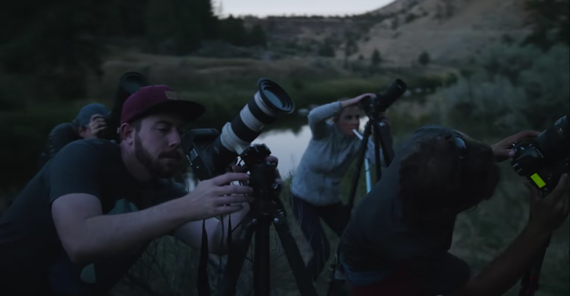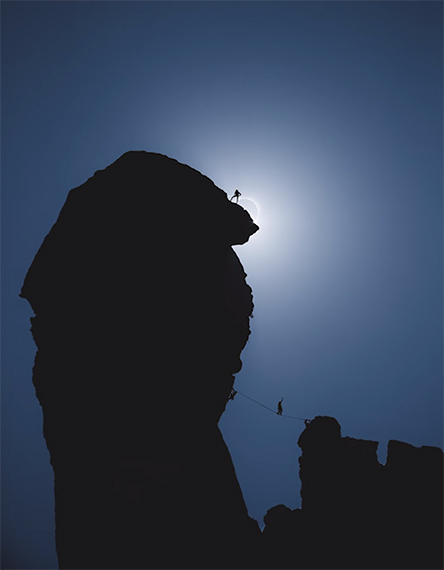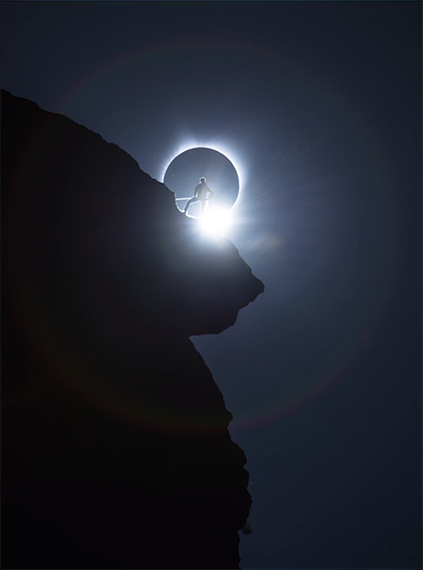Unless your head was under a rock, you’re probably well aware of the total solar eclipse that happened on August 21st, 2017. As you can imagine, social media was flooded with pictures of the eclipse, but one photo taken by adventure photographer Ted Hesser quickly stood out from the rest. Here’s the story behind how Hesser and his team captured the iconic shot:
The photo, shot at Oregon’s Smith Rock State Park, shows a silhouette of rock climber Tommy Smith backlit by the sun’s corona at the moment of totality. But photos like this one are far from simple to achieve; it took a grueling setup process and a true team spirit to land the photo of a century.
First, Hesser and his girlfriend, Martina Tibell—a climber and part of the team, scouted weeks ahead of the event, climbing several different routes. Then, navigating the hordes of other eclipse-watchers, Tibell and Smith spent the early morning hours climbing the 350-foot rock called the Monkey Face—not once, but twice—to set up the shoot. Smith Rock lies in the middle of the desert, and even early in the morning the sun was hot and scorching, so climbing wasn’t easy. Once they decided on a location and set up the shot, Smith had to stand there for almost an hour, his muscles cramping. At one point they even ran out of water. Still, they didn’t give up. The eclipse was coming soon, and they had to make sure that everything lined up. (Via PetaPixel)

Trying to capture that once-in-a-lifetime shot
Once the eclipse started, Hesser tried to line up his camera, but found working with his eclipse glasses combined with the solar filter on his camera frustrating, as he couldn’t see the landscape at all—just the sun. So he tried an alternative he’d found on the internet: dropping the solar filter and replacing it with a 10-stop neutral density filter, then zooming out a bit. It seemed to work.

Solar Eclipse Shoot at Smith Rock
Of course, Hesser didn’t use any filters during the totality, as none were needed. He shot the image on a Nikon D800 with an 80–400mm lens. For the photo that went viral, his settings were focal length 400mm, ISO 100, f/5.6, and a shutter speed of around 1/200 per second. With some trial and error, he found that bracketing his shutter over a really large range was the best way to go about it, and once he set that he was off and running.

Total Solar Eclipse at Smith Rock
While it was Hesser who landed the shot that went viral, it was a truly a team effort that made it possible.
Like This Article?
Don't Miss The Next One!
Join over 100,000 photographers of all experience levels who receive our free photography tips and articles to stay current:






Leave a Reply